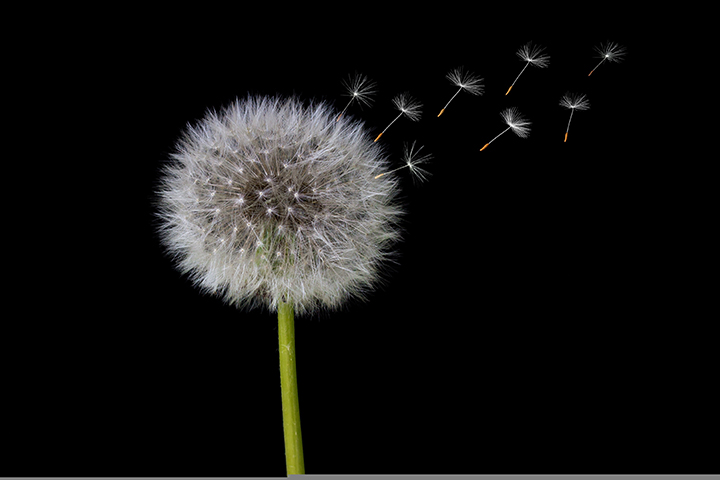Just recently, I realized the glisten in my eyebrows was actually a grey hair that had popped its way through the black mop of my eyebrow hairs! I was not in the least bit prepared for this milestone, but knew it was one of the many “joyous” transformations I’ve had to come to terms with since starting menopause some three years back. After the initial shock, I found myself reaching to Ayurveda to gain an appreciation of this next phase of life through the wise perspective of the ancient ayurvedic acharyas.
First, the Western perspective of menopause…
The average age of menopause is 51 and occurs for most women between 45 and 55 years of age. It means the end of the female monthly menstrual cycle in which the body sloughs off the built-up endometrial lining along with mucus and blood, if fertilization of the ovum does not take place. Starting around the mid-forties, during the perimenopausal years, estrogen levels gradually begin to wind down, which can cause temperamental periods (as well as mood swings), hot flashes. and trouble sleeping. Only a small number of women experience more severe symptoms or long-term issues.
Since estrogen receptors are located all over the body, the changes are manifold. They include accelerated bone loss, decreased thyroid function, weight gain, increased risk of heart disease, and arthritic pain. Other symptoms may include depression, difficulty concentrating, vaginal dryness, dyspareunia (painful intercourse), and difficulty experiencing orgasm. Eating a healthy diet, staying active by walking, doing yoga, or other forms of exercise, and making sure to get enough calcium for optimal bone health are important during this period of life.
Conventional medicine offers many forms of therapy for women suffering from menopausal symptoms. Since the 1960s, the therapy of choice had been hormone replacement therapy (HRT), which is the use of estrogens alone or in combination with progestins to replace the waning hormone levels. But the results of two large studies on HRT [The Heart and Estrogen/Progestin Replacement Study (HERS) and the Women’s Health Initiative (WHI) Study] showed important negative consequences on women’s health and quality of life that have greatly lowered the use of HRT in recent years. Instead of oral forms of hormones, the use of topical estrogen and/or progestin is used more nowadays. Other treatments for menopause include antidepressants to brighten dark moods and help ease hot flashes, sleeping pills and anxiolytics, and bone-strengthening medications to slow down bone loss and prevent fractures.
Menopause officially happens when it has been at least 12 months since a woman’s last menstrual cycle. Just as dried or aged plants cannot bear fruits, menopause also means a woman can no longer get pregnant. Here in the West, many women throw their hats up in the air in glee, relishing the prospect of no longer having to deal with their dreaded monthly period and the use of various methods of contraception to prevent unwanted pregnancies. But for many women, no longer being fertile can signify the loss of an important chapter in one’s life and adjusting to the natural aging of the body can be a big hurdle.
And now, menopause through Ayurveda…
Menopause, or the cessation of menses (raja pravrutti), is known as raja nivrutti. It marks the end of the pitta phase and start of the vata phase of life, just as menarche marks the end of the kapha phase and beginning of the pitta phase of life.
A few thousand years ago, Acharya Sushruta gave the average onset of menopause as 50 years, which, not surprisingly, jives with modern accounts. Menstruation is the upadhatu, or subsidiary tissue, of rasa dhatu. So, the function of the menstrual cycle depends on ahara rasa (the essence of digested food) which directly nourishes rasa (plasma), which in turn, nourishes rakta dhatu (blood tissue). Per Sushruta (Su.Su.14/19), ahara rasa is not capable of supporting the reproductive tissues responsible for menstruation as the female body ages, the expression of which is seen as depleted levels of the female hormones (decreased pitta dosha), reduced kapha dosha, and increased vata dosha.
In our modern and hectic world, which vibrates with feminist hashtag “metoo” throngs, vata often gets aggravated early on in life. We see evidence of this worldwide, as fertility clinics crop up left and right, due to increasing difficulty conceiving among women. And, on the opposite end of the spectrum, vata dosha manifests as premature menopause. The latter is termed akaalakrita, menopause before the appropriate age, as per Ayurveda.
In addition to high stress, improper food and lifestyle habits, and the ease with which surgery is offered in modern times to remove the uterus (hysterectomy) and other female reproductive parts, vata is further aggravated leading to early menopause.
Excessive and long-term consumption of sour, salty, and pungent foods; incompatible foods; dry, rough, stale, and cold foods; heavy and hard to digest foods which obstruct the body channels; and irregular mealtimes can all cause vata aggravation. Lifestyle factors which vitiate vata dosha in women include excessive sexual activity or physical exercise, overconsumption of alcohol, and regularly taking naps during the daytime. Experiencing excessive emotions such as anger, grief, fear, confusion, and exhaustion can also give rise to vata vitiation.
The appearance of wrinkles on the skin, grey hair, mood changes, loss of memory, and tiredness are all evidence of these habits which are the purva rupa (preclinical features) that start to appear during the perimenopausal years. Later, as aging (jara) continues, these symptoms of dhatupradoshaja vikara (vitiation of tissues) due to dhatu kshaya (tissue loss) increase and become visible signs of: decline in tejas (luster) of the hair and skin, loss of enthusiasm, reduced physical strength, and lowered immunity. The loss of natural estrogen also causes reduced lubrication in the synovial joints of the knee and hips, stress or urge incontinence, and loss of libido, too.
The table below summarizes these and other symptoms of menopause as described by Acharya Sushruta, Charaka, and Vagbhatt [(Su. Sa. Sutra Sthana 15/9), (A.H. Sutra Sthana 11/17-20), (Cha. Sa. Sutra Sthana 28)].
The ancient ayurvedic texts provide a vast array of herbal remedies and recommendations to pave the way for a smooth passage into menopause and prevent unwanted diseases through proper care. The herbs are nutritious for reproductive tissues, easy to absorb and metabolize, and have less dangerous side effects compared to Western medicine.
First, a wholesome diet and lifestyle modifications are initiated to begin the process of purifying the body. Snehana (oiling, a form of self-love) and swedana (sweating) are used to remove deep-seated toxins. Cleansing therapies (shodhana) using one of the forms of panchakarma or palliative approaches (shamana) are used, according to the woman’s constitution and vikruti (state of imbalance). Basti (therapeutic enema) may be given to strengthen the seat of vata. Oil massage using Maha Narayana or ashwagandha/bala taila helps keep the bones and joints strong, prevents body aches, and aides in getting good sleep.
After proper cleansing of the channels, rejuvenation therapy (rasayana) is the mainstay of treatment for menopause. Women who drink milk and consume ghee daily can maintain healthy reproductive tissues and a sexual life for a longer period of time (A.S. Sharira Sthana 1/64). Ashwagandha, in the form of powder or arishta is wonderful to help with mood swings, anxiety, stress, and insomnia. Jeerak is useful for digestive disorders and low agni. Balaristha is used in neurological conditions and vata-related bone and joint weakness. For vaginal atrophy and urinary tract infections, chandraphabha vati, gokshuradi guggulu and trin panchamool kwath are all useful. For hot flashes, kamdudha ras and praval pishti are effective in lowering pitta dosha and also as a source of calcium. Shatavari rasayana is an all-around marvelous woman’s herb for strengthening the reproductive organs.
Eating foods rich in calcium such as dairy and legumes, iron such as spinach, fenugreek leaves, and jaggery, and antioxidants in colorful fruits and vegetables such as berries, pomegranates, and beet root is important for overall health during menopause. In addition, many ayurvedic home remedies are beneficial in menopause, such as cumin-fenugreek-jaggery ladoos taken daily with warm milk – to prevent mineral and nutrient deficiencies; peanut-cashew-sesame seed powder added to ground ginger and cooked in jaggery – taken daily to restore vitality and energy; shatavari ghee added to foods; and dashamoola tea consumed daily.
Finally, keeping the mind occupied with healthy activities such as listening to pleasant music, spiritual chanting, meditating, yoga, pranayama, socializing, and doing charitable works keep the mind calm and elevates the mood. Exercising in moderation is extremely important to keep the body fit, bones strong, and for mental balance. Exposure to fifteen minutes of sunlight daily provides vitamin D needed to keep our bones strong and bodies strong.
Menopause is a major transition period in a woman’s life, but Ayurveda offers many pearls of wisdom which can make it easier, healthier, and happier for women to step into with a cloak of courage and given to us by our ancient ancestors.
Uma Hingorani
Advanced Ayurvedic Practitioner
References:
1. InformedHealth.org. (2020, July 7). Menopause: Overview.
2. NIH National Institute on Aging (NIA). (2021, September 30). What Is Menopause?
3. Baranwal, V. (2015, June). IJMPNP. 1(1):20-28.
4. Cagnacci A. et al. (2019 Sep 18). Medicina. 55(9): 602.
5. Anagha S., Deole Y.S. (2023, March 7). Menopausal Syndrome.
6. KS Krishmamurthy and Dr. Hebbar. (2015).
7. RS Raghuram and Dr. Manasa. (2018, Nov 29).




